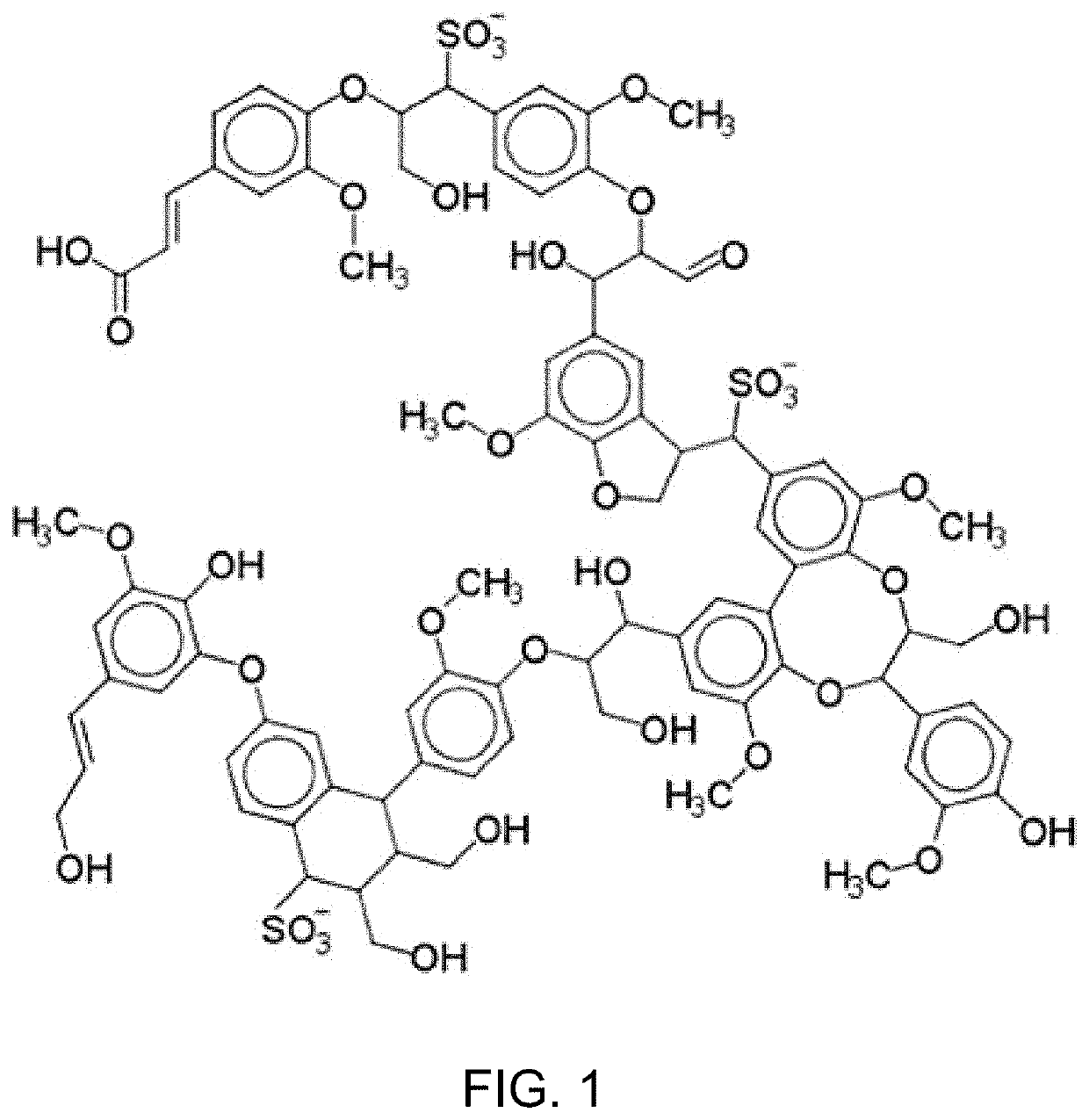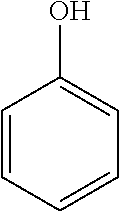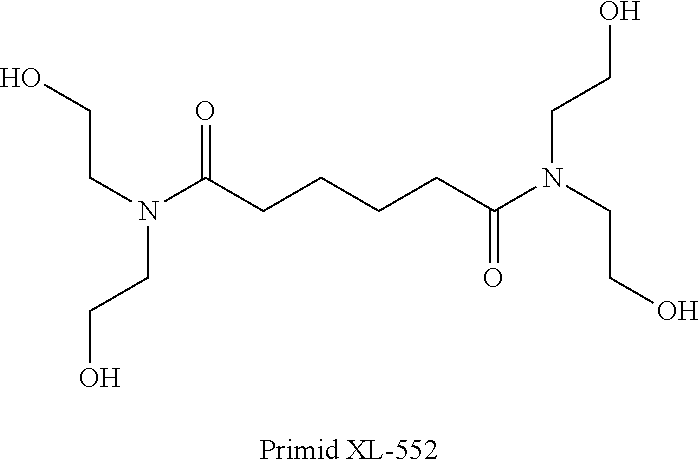Method of growing plants
- Summary
- Abstract
- Description
- Claims
- Application Information
AI Technical Summary
Benefits of technology
Problems solved by technology
Method used
Image
Examples
example 1
city
[0429]The phytotoxicity of a binder according to the invention was compared to a PUF binder. Each binder was diluted in a nutrient solution to various concentrations. These solutions were then used to grow plants. The results are shown below in Table 1.
[0430]In this test, the length of the first two leaves of the seedlings were measured. The length of this leaf pair is called the cotyledon leaf length. A reference without addition of binder was measured and set on 100%. If the added binder reduces the plant growth, the length of the leaf pair will be less, and the reduction in length is then calculated (see column growth inhibition).
[0431]The binder of the invention (Binder 1) was made as follows:
[0432]600.0 kg of ammonium lignosulfonate was placed in a mixing vessel to which 8.0 litres NH4OH (24.7%) was added and stirred. Afterwards, 190 kg Primid XL552 solution (pre-made 31 wt % solution in water) and 68 kg PEG 200 (100% solids) were added and mixed followed by addition of 11 ...
example 3
gth
[0456]Wet strength was determined by submerging bars into water for four days at room temperature. The strength is measured within 20 minutes after taking out the bars from the water.
[0457]The bars were made as follows. For each binder, 16 bars were manufactured from a mixture of the binder and stone wool shots from the stone wool spinning production.
[0458]A sample of this binder solution having 15% dry solid matter (16.0 g) was mixed well with shots (80.0 g). The resulting mixture was then filled into four slots in a heat resistant silicone form for making small bars (4×5 slots per form; slot top dimension: length=5.6 cm, width=2.5 cm; slot bottom dimension: length=5.3 cm, width=2.2 cm; slot height=1.1 cm). The mixtures placed in the slots were then pressed with a suitably sized flat metal bar to generate even bar surfaces. 16 bars from each binder were made in this fashion. The resulting bars were then cured typically at 225° C. The curing time was 1 h. After cooling to room te...
example 4
ion Strength
[0467]The delamination strength after aging was measured in accordance with EN1607:2013. Aging of the MMVF test specimens was achieved exposing them to heat-moisture action for 7 days at 70±2° C. and 95±5% relative humidity in climatic chamber.
[0468]Three different binders were tested.
[0469]Comparative Binder 1 is as described above for Example 1. It is a PUF binder.
[0470]Comparative Binder 3 is as described above. It is a sugar-based binder.
[0471]Binder 2 is according to the invention, as described above.
[0472]The results are shown below in Table 4. As can be seen from Table 4, the delamination strength in percentage after 28 days for the product with the binder of the invention (Binder 2) is improved in comparison to another formaldehyde-free binder (Comparative Binder 3) and similar to that of PUF (Comparative Binder 1).
TABLE 4delamination in % of initial071428Comparative10067.164.762.0Binder 1 (PUF)Comparative10054.255.045.8Binder 3Binder 210070.866.757.7
PUM
| Property | Measurement | Unit |
|---|---|---|
| Length | aaaaa | aaaaa |
| Length | aaaaa | aaaaa |
| Length | aaaaa | aaaaa |
Abstract
Description
Claims
Application Information
 Login to View More
Login to View More - R&D
- Intellectual Property
- Life Sciences
- Materials
- Tech Scout
- Unparalleled Data Quality
- Higher Quality Content
- 60% Fewer Hallucinations
Browse by: Latest US Patents, China's latest patents, Technical Efficacy Thesaurus, Application Domain, Technology Topic, Popular Technical Reports.
© 2025 PatSnap. All rights reserved.Legal|Privacy policy|Modern Slavery Act Transparency Statement|Sitemap|About US| Contact US: help@patsnap.com



